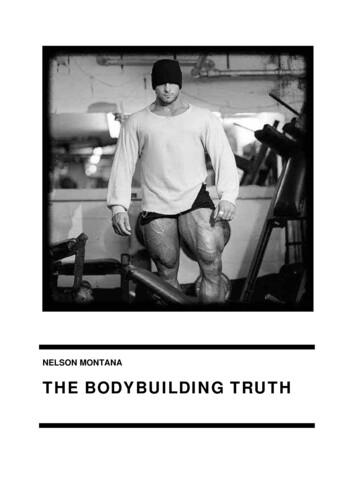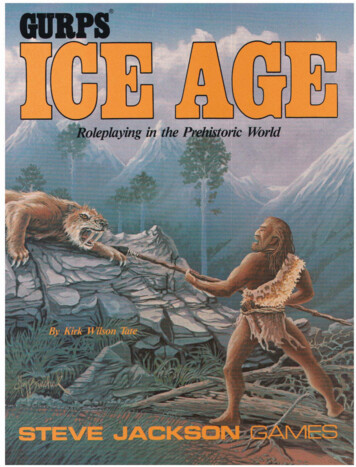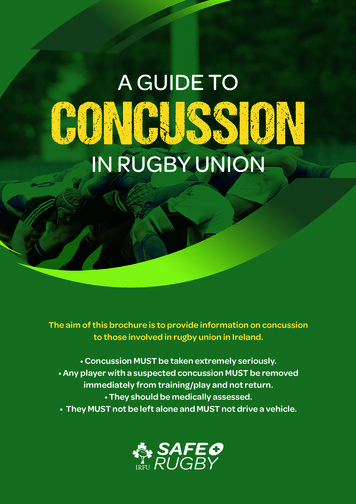
Transcription
A GUIDE TOIN RUGBY UNIONThe aim of this brochure is to provide information on concussionto those involved in rugby union in Ireland. Concussion MUST be taken extremely seriously. Any player with a suspected concussion MUST be removedimmediately from training/play and not return. They should be medically assessed. They MUST not be left alone and MUST not drive a vehicle.
A GUIDE TOIN RUGBY UNIONWhy MUST concussion be taken extremely seriously? I gnoring the signs and symptoms of concussion may result in death, a more serious brain injury or a prolongedrecovery period. T he potential for serious and prolonged injury emphasises the need for comprehensive medical assessment andfollow-up until the concussion has fully resolved. R eturning to play before complete resolution of the concussion exposes the player to recurrent concussions thatmight take place with ever decreasing forces. R epeat concussions could shorten a player’s career and may have some potential to result in permanentneurological (brain) impairment. T here is no such thing as a minor concussion or ‘knock to the head’.What is concussion? C oncussion is a traumatic brain injury. It is a complex process in which forces are transmitted to the brain andresult in temporary impairment of brain function. C oncussion can have a significant impact on the short and long term health of player if not managed correctly.What causes concussion?Concussion can be caused by a direct blow to the head or body and from whiplash type movements of the head andneck that can occur when a player is tackled or collides with another player or the ground. Immediately following asuspected concussion, the brain is susceptible to further significant damage in the event of another impact.Therefore the player MUST be immediately removed from activity and MUST NOT return until they havecompleted the graduated return to play (GRTP) protocol.What are the visible clues of a suspected concussion? Lying motionless on groundSlow to get upUnsteady on feetBalance problems or falling overGrabbing/Clutching head Dazed, blank or vacant lookConfused/Not aware of plays or eventsSuspected or confirmed loss of consciousnessLoss of responsivenessPlayers, coaches, healthcare professionals and referees should be familiar with the visibleclues of a suspected concussion. If a player has ANY ONE of the visible clues they MUSTbe immediately removed from activity and MUST NOT return until they havecompleted the graduated return to play (GRTP) protocol.RECOGNISE AND REMOVE
A GUIDE TOIN RUGBY UNIONWhat are the signs and symptoms of a concussion? Loss of consciousnessSeizure or convulsionBalance problemsN ausea ‘(feeling sick) or vomitingDrowsinessPlayer is more emotionalIrritabilitySadnessFatigue or low energyP layer is more nervous or anxious Confusion“Don’t feel right”HeadacheDizzinessFeeling slowed down“Pressure in head”Blurred visionSensitivity to lightAmnesiaFeeling like “in a fog“The signs and symptoms of concussion usually start at the time of the injury but the onset of these may be delayedfor up to 24–48 hours. Parents/guardians, family members and friends should be aware of the signs and symptomsof a concussed player. If a player has ANY ONE of the signs and symptoms they MUST be immediately removedfrom activity and MUST NOT return until they have completed the graduated return to play (GRTP) protocol.What happens if a player has a suspected concussion at training or when playing? T he player MUST be immediately removed from activity and MUST NOT return. T he player MUST NOT be left alone. T he player MUST NOT drive a vehicle. T he player MUST always be in the care of a responsible adult, who is informed of the player’ssuspected concussion. T he player should be medically assessed as soon as possible.A suspected concussion MUST be taken extremely seriously. The Pocket Concussion Recognition Tool (PCRT) can beused to assist in the recognition of a suspected concussion.RECOGNISE AND REMOVE
A GUIDE TOIN RUGBY UNIONFellow players/coaches/parents: YOUR responsibility: Y ou MUST do your best to ensure that the player is removed from play in a safe manner, if you observe themdisplaying any of the visible clues or signs or symptoms of a suspected concussion. Y ou MUST NOT allow a player to play rugby until they have completed the graduated return to play (GRTP) protocolif they are displaying signs or symptoms of a suspected concussion sustained while playing rugby or another sport. Y ou MUST ensure that the player is in the care of a responsible adult and inform them of the player’s suspectedconcussion.Player: YOUR responsibility: I f you have symptoms of a suspected concussion you must STOP playing and INFORM medical and/or coachingstaff immediately. B e honest with yourself and those looking after you. I f you have symptoms of a suspected concussion sustained while playing rugby or another sport, you MUST NOTplay rugby until you have completed the graduated return to play (GRTP) protocol.Following suspected concussion or a concussion, how does the player return to play?The player should avoid activities that require concentration or attention until symptoms have been absent for aminimum of 24 hours. Symptoms may be masked by medications such as headache tablets, anti-depressantsand/or sleeping medication and caffeine. The graduated return to play (GRTP) of a player following a concussionshould be undertaken on an individual basis with the full cooperation of the player.IRFU CONCUSSION GUIDELINESAGE GROUPMINIMUM REST PERIOD POST CONCUSSIONGRTPMINIMUM TIME OUTU6’s - U20’s*14 Days8 Days23 Days (3 Weekends Missed)ADULT14 Days6 Days21 Days (2 Weekends Missed)* under age (U6’s - U20’s) players playing adult rugby must follow age group guidelinesPlayers may not return to play until:1. all their symptoms have subsided.2. they have followed the GRTP protocol.3. they have been medically cleared to return.Clubs and schools should have the contact details and directions for alocal doctor or emergency services listed on their noticeboard and providedto all coaches and parents.RECOGNISE AND REMOVE
A GUIDE TOIN RUGBY UNIONISSUERESPONSEINJURYPlayer assessed on pitch (visible clues and signs/symptoms)SUSPECTED CONCUSSIONPlayer MUST be immediately removed from activity and MUST NOT returnRECOGNISE AND REMOVEMANAGEMENTPlayer referred to doctor or Emergency Department for diagnosis andfurther assessmentRETURN TO PLAYPlayer rests as per concussion guidelines on previous page and undertakesgraduated return to play (GRTP) protocol as per below tableOther players, parents, coaches and administrators should insist that the above guidelines are always followed andbe vigilant for the return of symptoms, even if the GRTP protocol has been successfully completed. Please note thateach stage in the GRTP protocol may take longer than the minimum period stated below. Players with concussionshould not move to the next stage in the event that any symptoms are still present.Graduated return to play (GRTP) protocolPlayers can only move on to the next stage once they have been symptom free during the full period of each stage.If they are not symptom free, they must stay at that stage until they are.Rehabilitation stageExercise at each stageof rehabilitationObjective of stageAdultU6’s - U20’sRestNoneRest14 days1. No activityComplete physical and mental rest without symptomsRecovery1 day2. Light aerobic exerciseWalking, swimming or stationary cycling keepingintensity 70% maximum predicted heart rate(Max predicted heart rate 220 – Player Age).No resistance trainingIncrease heart rate1 day2 days3. Rugby-specific exerciseRunning drills. No impact activitiesAdd movement1 day2 days4. Non-contact training drillsProgression to more complex training drills e.g. passingdrills. May start progressive resistance trainingExercise, coordinationand mental load1 day2 days5. Following medical clearance,full contact practiceMay participate in normal training activitiesRestore confidence andassess functional skillsby coaching staff2 days2 days6. After 24 hours, return to playPlayer rehabilitatedRecovered21 days23 days14 daysRECOGNISE AND REMOVE
A GUIDE TOIN RUGBY UNIONUseful Contact DetailsEmergency Services: 999 or 112Club/School:Doctor Name:Tel:Downloaded from bjsm.bmj.com on March 11, 2013 - Published by group.bmj.comFor further information see the following fare.com@IRFUSportsMedPocket CONCUSSION RECOGNITION TOOL To help identify concussion in children, youth and adults3. Memory functionFailure to answer any of these questions correctly may suggest a concussion.“What venue are we at today?”“Which half is it now?”“Who scored last in this game?”“What team did you play last week / game?”“Did your team win the last game?”RECOGNIZE & REMOVEConcussion should be suspected if one or more of the following visible clues,signs, symptoms or errors in memory questions are present.1. Visible clues of suspected concussionAny one or more of the following visual clues can indicate a possible concussion:Loss of consciousness or responsivenessLying motionless on ground / Slow to get upUnsteady on feet / Balance problems or falling over / IncoordinationGrabbing / Clutching of headDazed, blank or vacant lookConfused / Not aware of plays or events2. Signs and symptoms of suspected concussionPresence of any one or more of the following signs & symptoms may suggest a concussion:-Loss of consciousnessSeizure or convulsionBalance problemsNausea or vomitingDrowsinessMore emotionalIrritabilitySadnessFatigue or low energyNervous or anxious“Don’t feel right”Difficulty remembering 2013 Concussion in Sport Group-HeadacheDizzinessConfusionFeeling slowed down“Pressure in head”Blurred visionSensitivity to lightAmnesiaFeeling like “in a fog“Neck PainSensitivity to noiseDifficulty concentratingAny athlete with a suspected concussion should be IMMEDIATELY REMOVEDFROM PLAY, and should not be returned to activity until they are assessedmedically. Athletes with a suspected concussion should not be lef t alone andshould not drive a motor vehicle.It is recommended that, in all cases of suspected concussion, the player is referred toa medical professional for diagnosis and guidance as well as return to play decisions,even if the symptoms resolve.RED FLAGSIf ANY of the following are reported then the player should be safely andimmediately removed from the field. If no qualified medical professional isavailable, consider transporting by ambulance for urgent medical assessment:-Athlete complains of neck painIncreasing confusion or irritabilityRepeated vomitingSeizure or convulsionWeakness or tingling / burning in arms or legs-Deteriorating conscious stateSevere or increasing headacheUnusual behaviour changeDouble visionRemember:- In all cases, the basic principles of first aid(danger, response, airway, breathing, circulation) should be followed.- Do not attempt to move the player (other than required for airway support)unless trained to so do- Do not remove helmet (if present) unless trained to do so.from McCrory et. al, Consensus Statement on Concussion in Sport. Br J Sports Med 47 (5), 2013 2013 Concussion in Sport GroupThe Memory Function (Maddock’s Questions) should not be used to clear a player who has a suspected concussion
The Pocket Concussion Recognition Tool (PCRT) can be used to assist in the recognition of a suspected concussion. A GUIDE TO IN RUGBY UNION Loss of consciousness Seizure or convulsion Balance problems Nausea '(feeling sick) or vomiting . the basic principles of first aid (danger, response, airway, breathing, circulation .
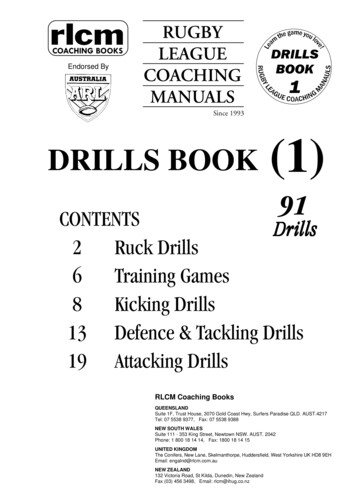
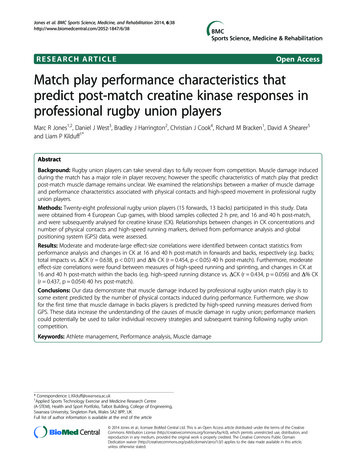
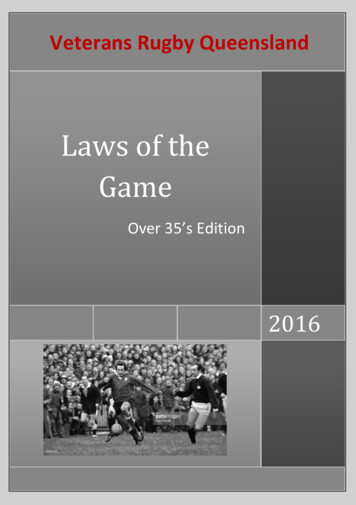
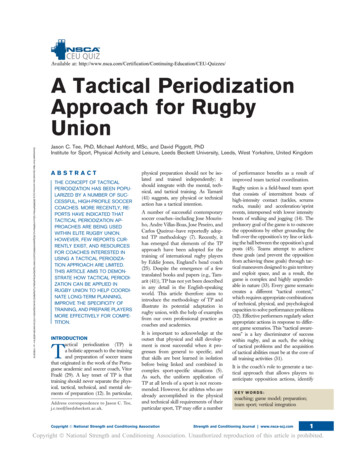
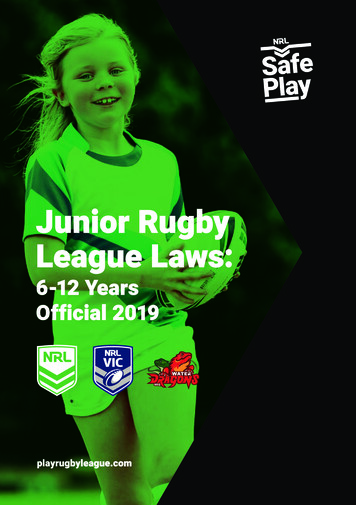
![BLACK HISTORY QUIZ [2019] - Haringey](/img/31/black-history-quiz-leader-2019.jpg)


